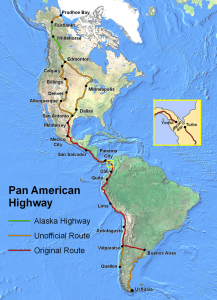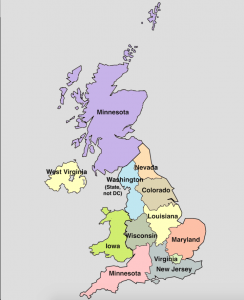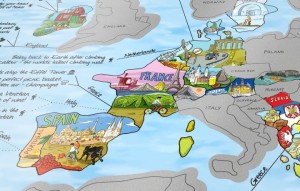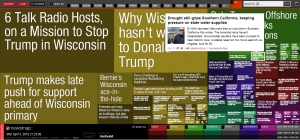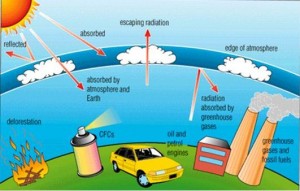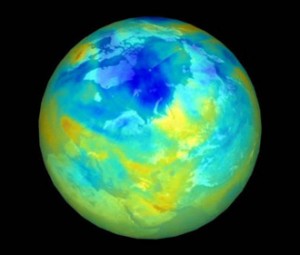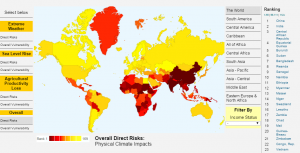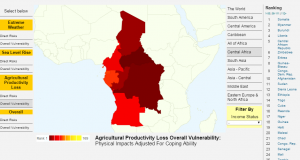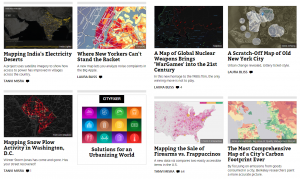Climate Central is a nonprofit news organization that analyzes and reports key findings on climate change to the public. One feature of their site is a sea level rise analysis, which includes four tools: an interactive map of sea level rise and flood risk areas, flood risk projections, comprehensive analysis of sea level rise and flood exposure by location and heat maps of sea level rise and flood exposure by topic.
To understand sea level rise in your area, use the map tool and select your state then a specific location within the state. I chose to explore the impact of sea level on Virginia Beach, Virginia. The map allows you to select a water level rise between .5-30 meters. Below are the risk zone maps predicted for .5 meters of sea rise (on the left) and for 3 meters rise (right). You can also choose to examine the social vulnerability, the size of the population impacted, the ethnicity of the majority of people in the area, the income percentile and property values of homes impacted by the level of sea level rise presumed.
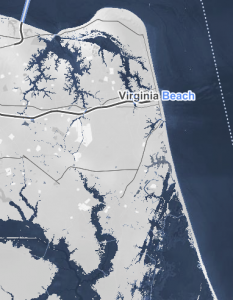
The forecast feature allows you to examine the flood risk projection and probabilities in an area. It includes a graph that relates flood likelihood and period. Historical water levels are indicated in the water level chart. For example, in Virginia Beach, the level of a mild flood risk is 2.3 feet. This level of flood has an annual risk of 100%. Moderate level flood is 3.5 feet and has a current annual risk of 10%. The highest observed flood is also indicated as 4.7 feet, which is considered an extreme flood level and has an estimated current annual risk of 1%. Below is a flood risk graph for floods reaching 5 feet or above in Virginia Beach.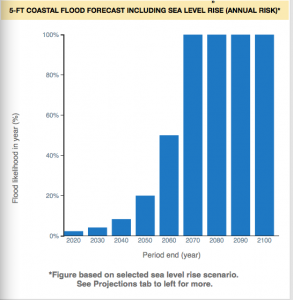 Surging Seas also allows you to compare projections taking into consideration potential policies regarding emissions and warming such as moderate carbon cuts vs. unchecked pollution. Global warming has already raised global sea level about 8 inches in the last 150 years and the rate is accelerating rapidly. These resources are incredibly fascinating to explore the potential impact of climate change on coasts.
Surging Seas also allows you to compare projections taking into consideration potential policies regarding emissions and warming such as moderate carbon cuts vs. unchecked pollution. Global warming has already raised global sea level about 8 inches in the last 150 years and the rate is accelerating rapidly. These resources are incredibly fascinating to explore the potential impact of climate change on coasts.
The Surging Seas feature of Climate Central can be found at http://sealevel.climatecentral.org

